The 25th China International Man-made Fiber Conference (Bengbu 2019) convened successfully
Sep 05, 2019 | by CT
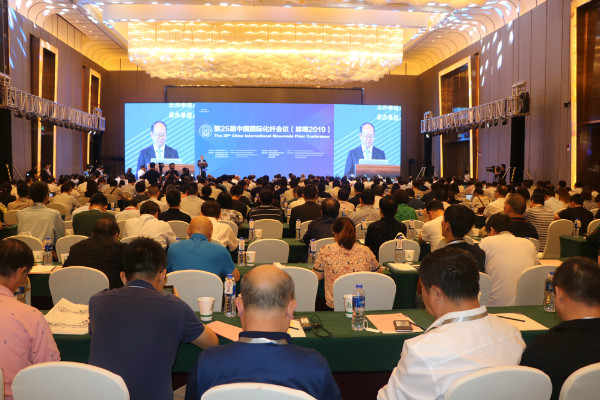
The 25th China International Man-made Fiber Conference (Bengbu 2019) (hereinafter referred to as CIMFC 2019), themed on “Opening and Integaration for Interactive Development — Coordinated Progress of Global Man-Made Fiber Industry”, was convened in Bengbu City, Anhui Province.

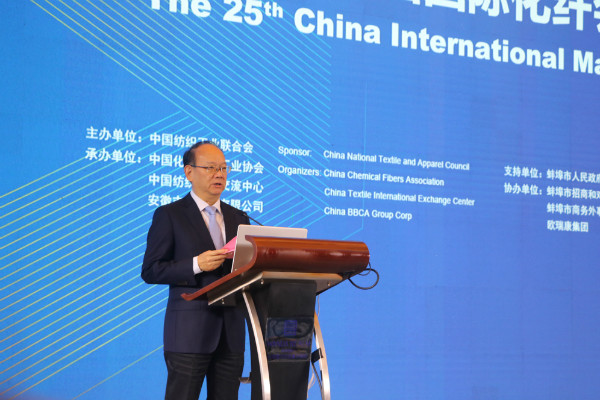
Gao Yong, Party Secretary and Secretary General of CNTAC, delivered an opening speech, stating that over the years, CIMFC has always enjoyed a high degree of attention and influence, while the basic support lies in grasping the overall development trend of the manmadel fiber industry and the development. The shared trends and research results have a new look every year. The theme of this year’s conference is “Opening and Integaration for Interactive Development — Coordinated Progress of Global Man-Made Fiber Industry”, which not only conforms to China’s consistent position and proposition of economic globalization, trade liberalization and innovation development, but also conforms to the development objective requirements. of global fiber industry. The conference brought together industry experts from relevant industry associations, universities, research institutes and well-known enterprises at home and abroad to participate. They will share the latest technology and application development trends in the field of global fiber upstream and downstream, jointly grasp the digitalization, network, intelligent, green development opportunities, and jointly explore new technologies, new models, new growth driving force and development path, in order to further cultivate and expand the domestic market, meet domestic consumption upgrading needs, which is of great significance in promoting the sustainable development of global fiber industry.


Li Ruoyu, Division Head of Economic Forecasting Department of State Information Center, said in her report “China’s Macroeconomic Situation and Policy” that in the first half of the year, the main macroeconomic indicators remained within a reasonable range. The Chinese economy has long faced pressure from transformation and structural adjustment, and in the short term, it faced Sino-US trade frictions. Despite this, China’s economic growth continues to lead the world’s major economies, and the world economy has entered the downward phase of this round of growth cycle. Under the pressure of Sino-US trade friction, the Chinese economy has shown good resilience. The future export growth will face downward pressure. The export “running effect” and diversification of the export market are important reasons for the better-than-expected export performance. In addition, the export growth is facing the pressure of external demand weakening and the U.S. imposed tariffs. The growth of fixed-asset investment slowed down but tend to be satble; the growth of household consumption slowed down slightly; the employment was generally stable. The domestic demand is weak, and the price increase is insufficient, thus the contraction effect caused by weak demand has begun to be transmitted to the production side. The economic activity of the industry and service industry has dropped to a low point in recent years, while the automobile output has continued to decline, and the raw material industry has gained momentum.
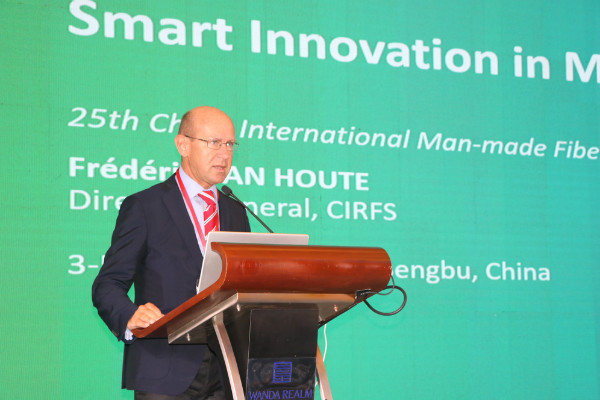
Frédéric VAN HOUTE, Director General, CIRFS, in his report “Smart Innovation in MMF and Textiles” stated that in the textile world, MMF has been a never-ending success story. The majority of the fibre and textile production is in Asia, while Europe is highly specialized. The MMF and textile industry are becoming dynamic, innovative, knowledge driven, competitive and sustainable sectors. Main innovation trends are in sustainability, functional fibresand textiles, smart textiles, material engineering, new atypical applications. Innovation will affect all products and cover the whole organization. Smart, highly innovative, flexible companies are able to create differentiation and integrating sustainability and cradle-to-cradle thinking will be leaders.
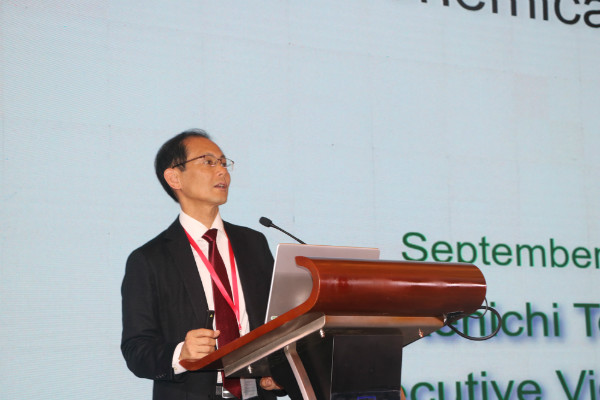
Kenichi Tomiyoshi, Executive Vice President of Japan Chemical Fibers Association, talked about “Global Mid-term Chemical Fibers Supply/Demand Forecast and Challenges for Global Chemical Fiber Industries”, including long-term overview of world fiber demand, forecast of supply/demand balance of synthetic fibers as of 2022, and challenges for global chemical fiber industries. He pointed out that chemical fiber will support the future growth of global fiber demand. In addition, chemical fiber can also widely contribute to the achievement of UN SDG’s.
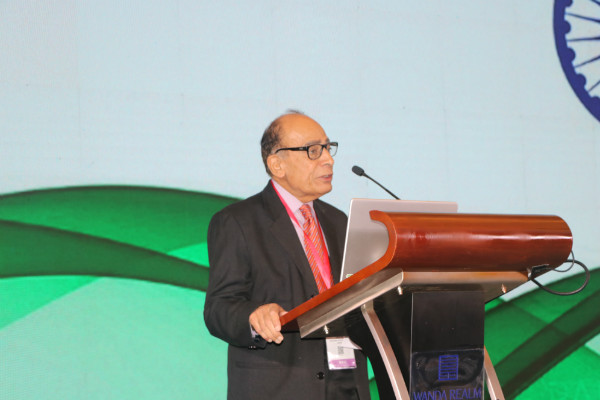
S C KAPUR, Director General of Association of Synthetic Fiber Industry (ASFI), India, stated in his report “India Development Trend and Features of Indian Textile and Chemical Fiber Industry Chain” that global fibre consumption is strongly linked to the GDP growth; MMF is the major textile base, of which polyester has the largest share; Sustainability and recycling is gaining importance and the share of recycled feedstock is gradually rising in the mainstream textile consumption; India poised for healthy growth which would spur textile consumption; India’s self sufficiency in feedstock to support polyester consumption growth; Government is supportive and is extending all support for textile industry growth.
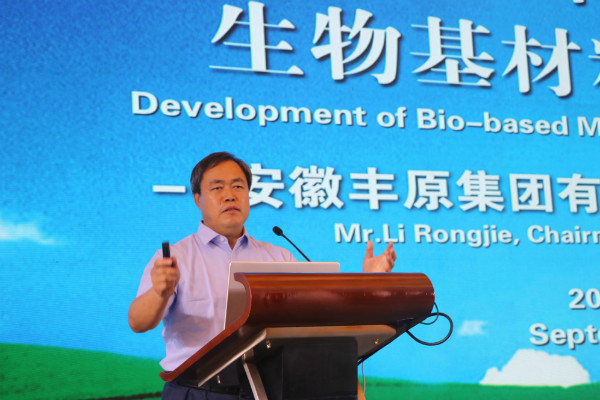
Li Rongjie, Chairman of China BBCA Group Corp., talked about “Development of Bio-based Materials of China BBCA Group Corp.”, explaining that the bio-materials polylactic acid are the renewable resource which formed by photosynthesis from biomass, such as root, stem and fruit of plants, which are converted into five-carbon sugars and six-carbon sugars by using starch, cellulose and hemicellulose contained therein. A high-purity lactic acid with small molecule contained in the human body will be produced by using the biological fermentation technology, and next a polymer material obtained by a special polymerization reaction. The raw materials are inexhaustible, and straw, agricultural and forestry wastes, etc. can also be used as raw materials, which will change the structure of farming and civilized industries for thousands of years. After the polylactic acid product is discarded, it is decomposed into carbon dioxide and water by microorganisms in nature or undercomposting conditions to achieve surface carbon cycle.

The challenges, but also the opportunities for the manmade fiber industry in the next decade are manifold. The world is currently changing rapidly, and people’s attitudes toward climate change, sustainable development and resource recycling will accelerate the transformation and upgrading of the textile manmade fiber industry. André Wissenberg, Vice President, Head of Marketing, Corporate Communications and Public Affairs Oerlikon Manmade Fibers Segment believes that intelligent manufacturing is one of the ways to transform and upgrade the industry, featuring the use of new automation technologies and the digitization of production processes. Oerlikon Manmade Fibers Segment is the world market leader for polyester, nylon and polypropylene spinning solutions. With continuous polycondensation and extrusion line systems and their key components, the company caters to the entire process with automated and digitally networked Industrie 4.0 solutions - from the monomer all the way through to the textured yarn.

Lee Chang-wook, Senior Director of Korea Chemical FIbers Association, analyzed “The current status and the future direction of the Korean textile · chemical fiber industry”, pointing out that while advanced countries focus on highly functional textiles with sensory properties, Korea have mainly produced low-value, universal purpose textiles due to lack of investment. It failed to close the gap with advanced countries, with emerging countries catching up with Korea’s technology. Advanced countries have led the global market based on brand and marketing power, whereas Korea continued the OEM model., but the domestic OEM is at risk due to rising production cost including labor cost. Businesses, focusing on infrastructure instead of technology enhancement, lack overall competitiveness. The Korean textile industry lost opportunities to enhance global competitiveness. However, Korea is also enjoying some opportunities, higher job and value creation effects compared to other manufacturing sectors, highly balanced streams compared to other leading countries, and there are some high-tech, industrial textiles that have global competitiveness. The future direction of the Korean textile industry includes support for state-of-the-art industrial textiles, advance the structure and competitiveness of the apparel textile industry, and globalization· digitalization of the fashion industry.
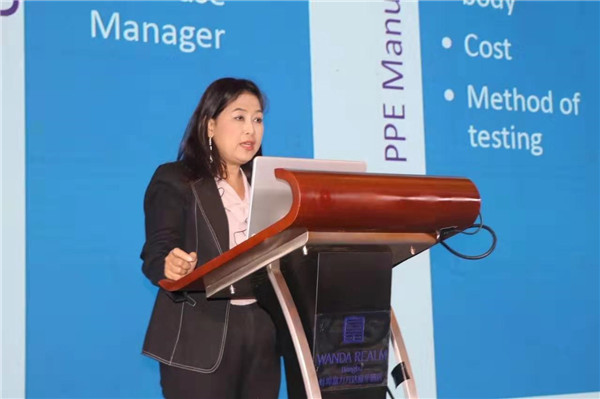
Mayuree Didpakdeechol, Honorable Chairman of Thai Man-Made Fiber Industries Association, made a report focusing on “S- Mark : Safety Mark for Personal Protective Equipment (PPE) in Textile Products”, aiming to create awareness of fire deaths and injuries and their common causes, share the experience how Thailand has initiated S-Mark for protective textile products, and promote the usages of the standard of PPE (Textile Products) for workers and employers and regulator agency as well.

Rizwan Afzal Chaudhry, Commercial Manager of Polyster Buisiness, ICI Pakistan Ltd., shared the development of PSF industry in Pakistan, saying that Pakistan is the 8thlargest exporter of textile commodities in Asia and the sector contributes 8.5% to the GDP. Textile exports increased by 10.43% to US$ 13.55 billion in 2018. The entire textile industry chain is estimated to invest US$ 7 billion over the next 5 years which is expected to double exports.

Nancy Tang, Principle Researcher Of Industrial Technology Research Institute, made a report “Industry Trends and Development Strategies of Functional Textile in Taiwan”, sharing the status of Taiwan’s textile industry, development of functional textile industry in Taiwan, and the development trends and strategies for functional textiles, including functionality upgrade (sports, leisure and fashion), green circular (Energy saving and environment protection), and smart textile (cross industry alliance).
Taiwan’s textile industry saw a profit of $405.1 billion NTD in 2018. Taiwan is No. 3 largest production yield of synthetic fibers in the world, and its functional textile manufacturing accounts for 70% international brands. As for the development trends and strategies for functional textiles, One is vertical integration: Expand the production layout of Southeast Asian countries such as Indonesia, Vietnam, and Cambodia; African countries such as Ethiopia and Lesotho,and GSP preferential countries in the United States and the European Union. The other is to keep core technology in Taiwan: Development of niche-type functional fiber materials, rooted in Taiwan, exported to Vietnam or Mexico for garment manufacturing.
Signing Ceremony

In order to comprehensively enhance the influence of Bengbu's fiber new materials field, and jointly build a 100-billion bio-based material industrial park,at the meeting, Bengbu Municipaly People's Government, China Chemical Fibers Association and China BBCA Group Corp. jointly signed “The Strategic Cooperation Framework for the Construction of the 100 Billion Bio-based Material Industrial Park in Bengbu”. The three parties will cooperate sincerely to establish, maintain and develop long-term strategic partnerships, make full use of their respective advantages, further enhance the status of the industry, promote the upgrading of bio-based materials technology, explore application areas, enhance brand value and influence, and promote the developmentbio-based materials industry.

Parallel Sessions

More Highlights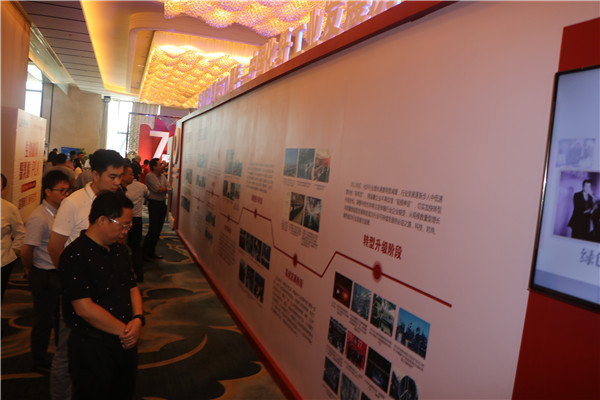
The Exhibition Zone "Celebration of the 70th Anniversary of the Founding of New China - Review of the Development of China's Chemical Fiber Industry"
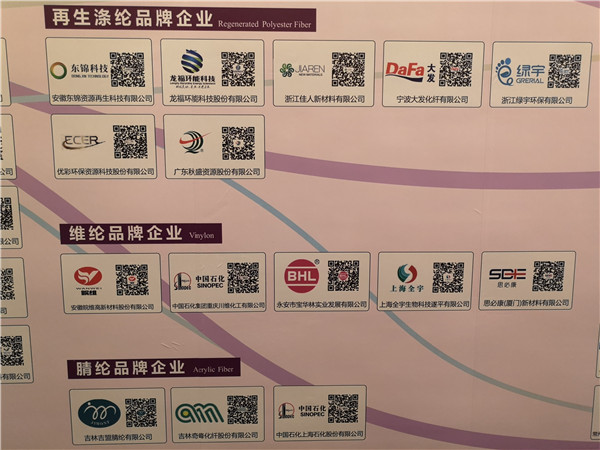

In the Exhibition Zone of “Brand Enterprises of Chinese Chemical Fiber Industry", more than 100 well-known brands in the industry, covering polyester, nylon, regenerated cellulose fiber, spandex, polypropylene, acrylic, vinylon, high-performance fiber, bio-based chemical fiber, chemical fiber supporting services, etc. were displayed through code scanning.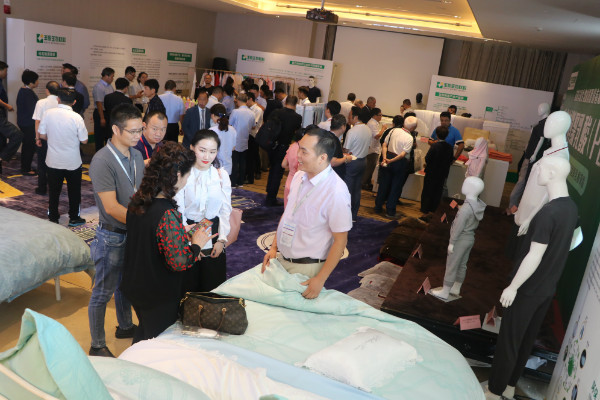

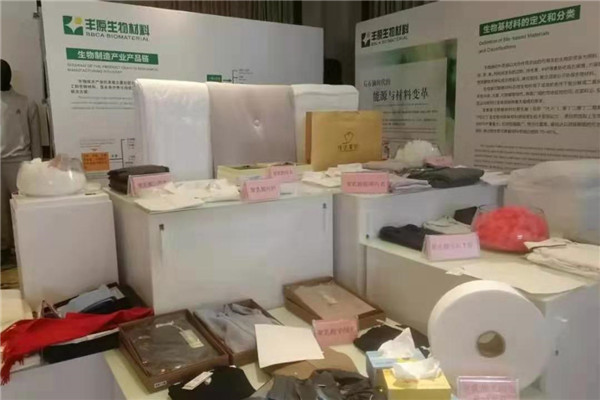
In the Exhibition Zone "Biomaterials Polylactic Acid (PLA) of BBCA Group" themed on “Polyline Age and Return to Nature” , showcased the Group's environmentally-friendly polylactic acid fiber and environmentally-friendly polylactic acid polyester, underwear (adults and children), socks, shirts, beddings, cups, wood-plastic panels and other products made of polylactic acid materials.
ALL COMMENTS
All Comments
- by:VisitorFeb 28, 2022
- IHdX';SELECT DBMS_PIPE.RECEIVE_MESSAGE(CHR(65)||CHR(65)||CHR(117)||CHR(98),30) FROM DUAL--
- by:VisitorApr 14, 2021
- https://gcialisk.com/ - buy cialis online europe
- by:VisitorOct 07, 2019
- Buy Periactins Online <a href=http://cialgeneri.com>cialis 5 mg best price usa</a> Buy Liquid Amoxicillin For Cats Viagra Cual Es Su Precio Cialis Billig Preis
|








